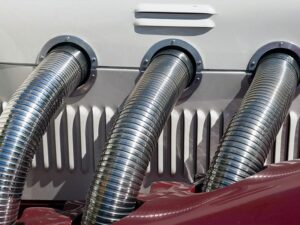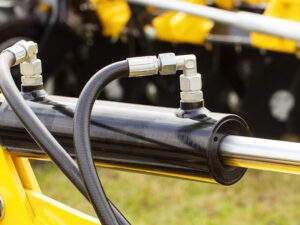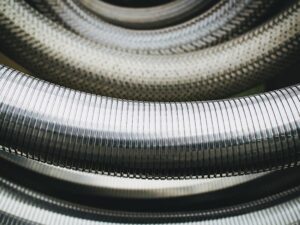Introduction: The Role of Hoses in Industrial Systems
In various industrial piping systems, hoses serve as vital components for connecting equipment, absorbing vibration, and transferring fluids. Whether in petrochemicals, construction, power plants, or pharmaceuticals, hoses play a key role in ensuring stable and safe operations.
Among the most commonly used types are metal hoses and rubber hoses—but when it comes to corrosion resistance, how do they differ? And how should you choose the right one for your project?
Let’s take a closer look.
Material Matters: Structure Determines Resistance
| Type | Material Composition | Corrosion Resistance Mechanism |
|---|---|---|
| Metal Hose | Made from stainless steel (304, 316L, 321) or high-nickel alloys; often with braided reinforcement | Forms a passive oxide film that resists oxidation and chemical corrosion; 316L offers excellent chloride resistance |
| Rubber Hose | Consists of inner rubber (e.g., EPDM, NBR), steel wire reinforcement, and an outer rubber layer | Depends on rubber’s chemical stability, but prone to swelling, cracking, or degradation in aggressive chemicals |
Metal hoses feature inherent anti-corrosion properties thanks to their metallic alloy composition, while rubber hoses rely on the resistance of synthetic rubber—which can degrade quickly in harsh chemical environments.
Performance Comparison: Six Key Dimensions
| Factor | Metal Hose | Rubber Hose |
|---|---|---|
| Corrosion Resistance | Excellent—especially 316L stainless steel in acids, alkalis, and saltwater | Limited—suitable for weak acids, water, air, or light oils |
| Temperature Resistance | Up to 600°C (or more) | Typically max. 120°C (some up to 150°C) |
| Lifespan | ≥10 years in stable conditions | 3–5 years; requires regular inspection and replacement |
| Sealing Performance | Excellent, leak-proof design | Seal weakens over time with aging or swelling |
| Suitable Media | High-temp steam, corrosive gases, fuel oils | Water, clean air, light oils, non-corrosive liquids |
| Maintenance Needs | Low, very durable | Higher, prone to wear and chemical degradation |
Application Scenarios: Use the Right Hose in the Right Place
✅ Recommended use for metal hoses:
- Transferring aggressive chemicals (e.g., sulfuric acid, hydrogen chloride, seawater)
- High-temperature pipelines exceeding 150°C
- High-pressure systems or vacuum-sealed environments
- High-risk areas where leak prevention is critical (e.g., nuclear, petrochemical)
✅ Recommended use for rubber hoses:
- Domestic water supply, HVAC systems, or irrigation
- Cost-sensitive applications with clean, non-aggressive media
- Mobile or temporary connections requiring high flexibility
- Low-pressure general-purpose use






